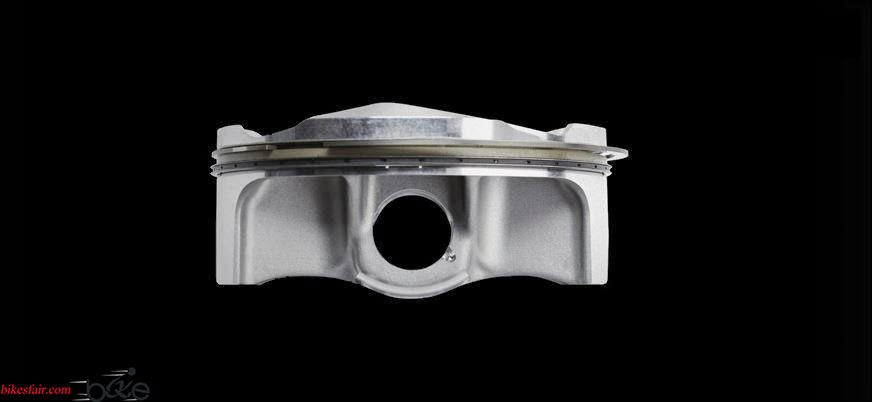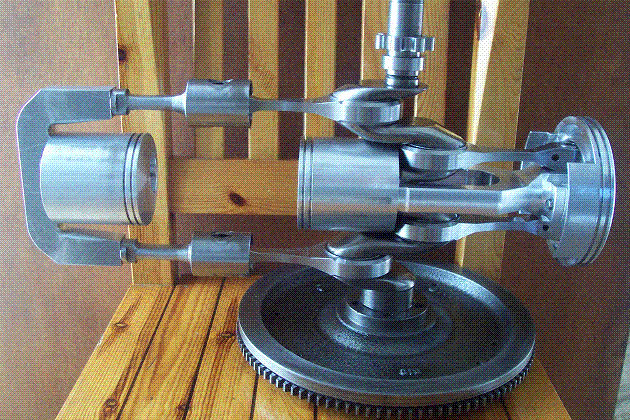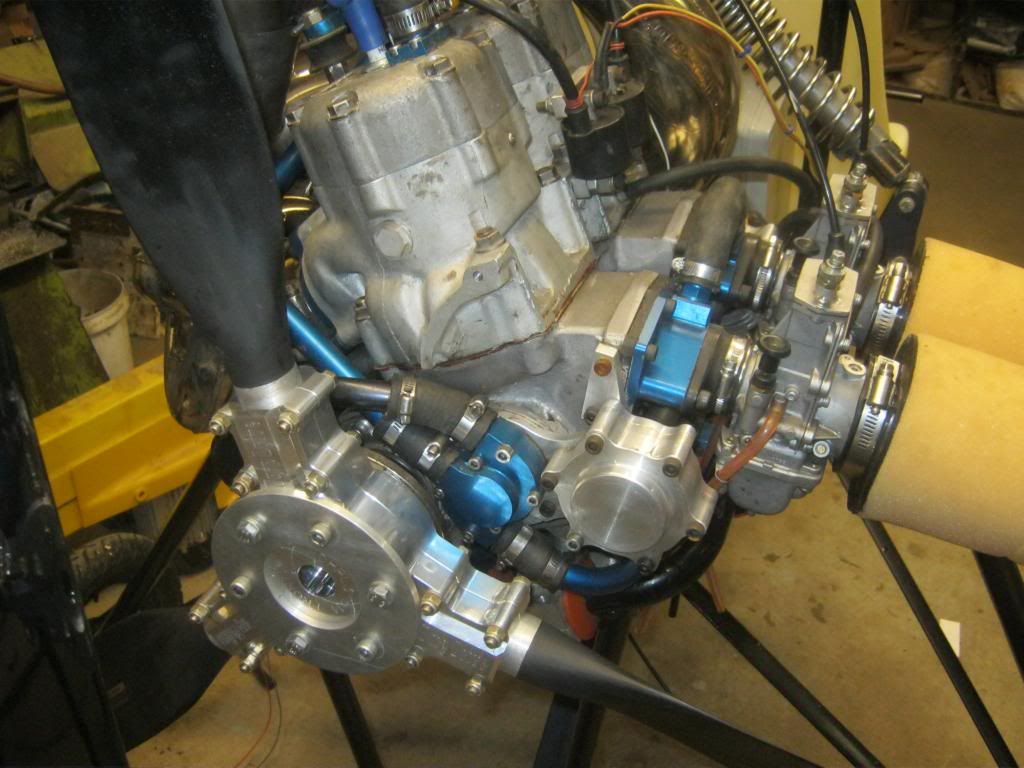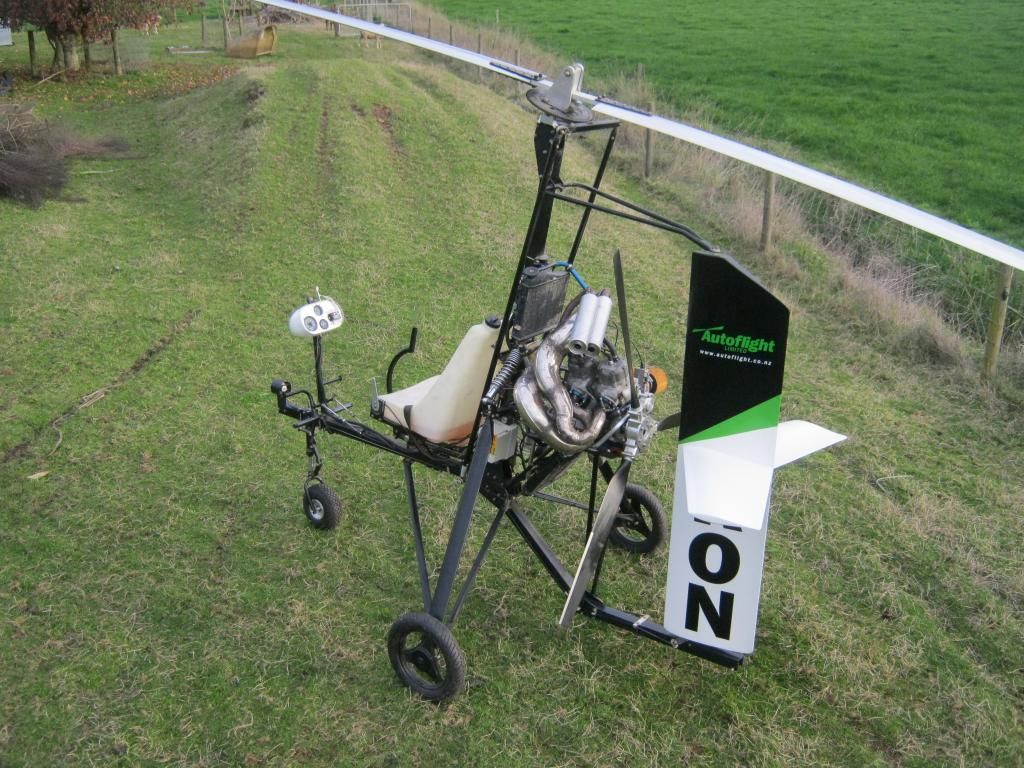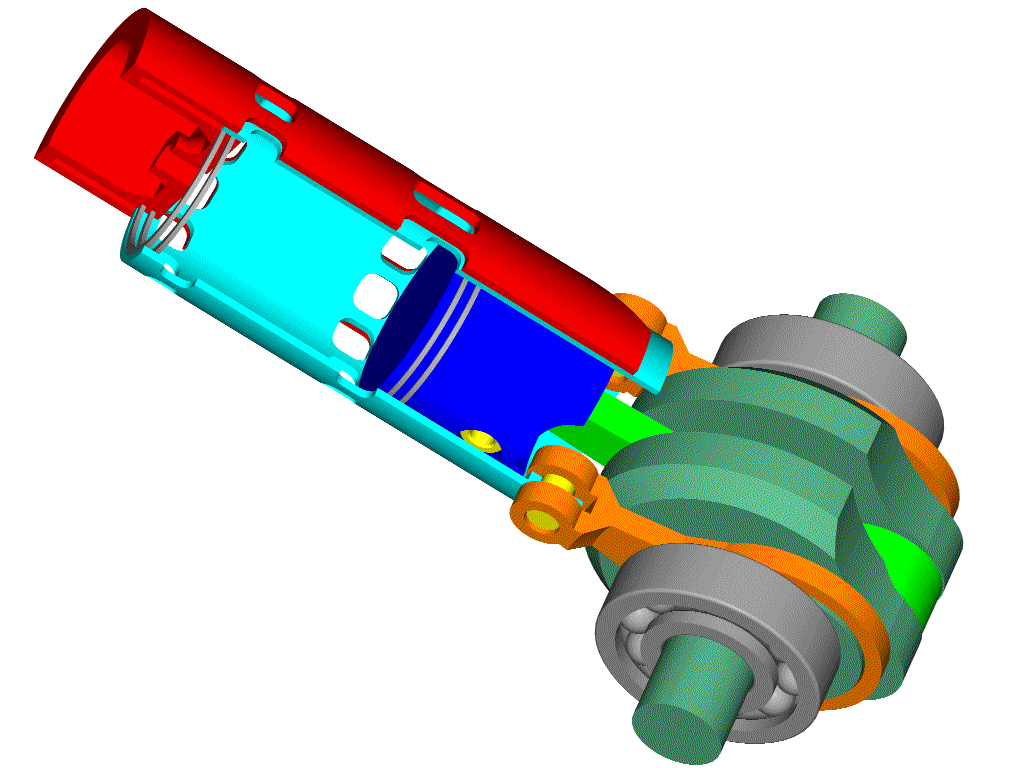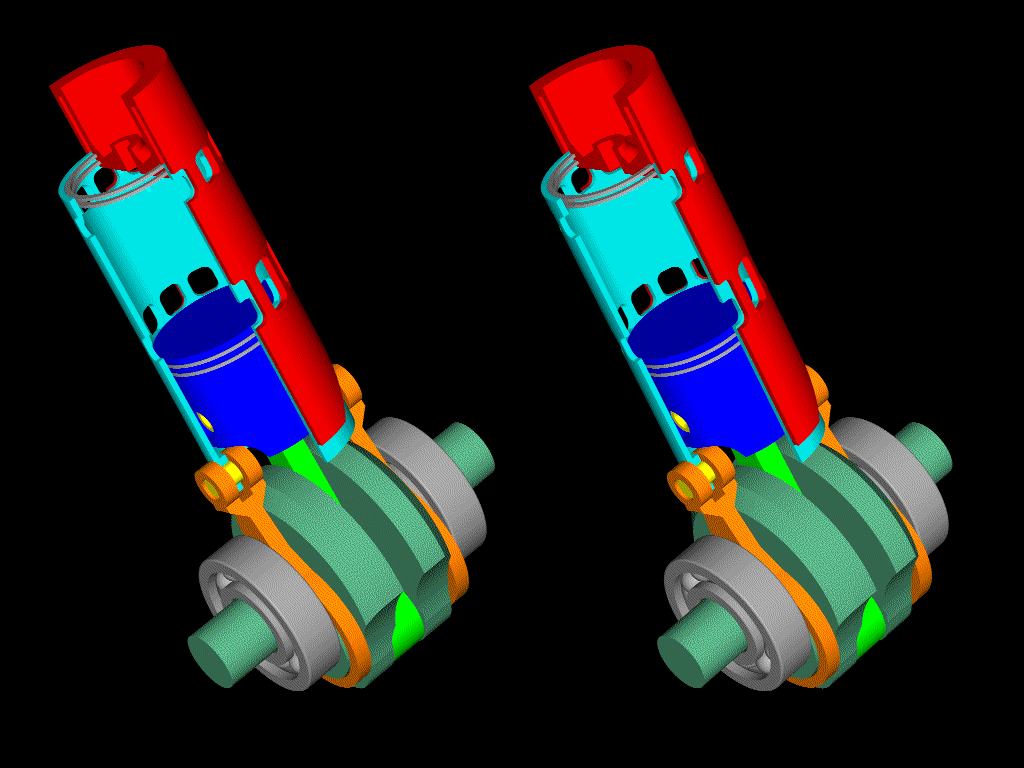Hello Uniflow and thanks for the info.
I still cannot find a patent application publication for a 2-stroke engine under the name of Ryger.
And, unless I am wrong, there are no drawings of the Ryger engine in the Internet.
From the writings of LucF (previous posts) the biggest advantage Ryger claims for his 2-stroke engine is the 80% reduction of HC in the exhaust “as compared with a similar racing 2-stroke engine”; however, looked in absolute numbers, the HC in the exhaust of the Ryger 2-stroke are some five times above the limits set for the old (made before 1986) non-catalytic 4-stroke engines.
So let me ask: when you say “dry top” and “no oil burn”, do you mean absolutely or in comparison to a similar 2-stroke?
To put it differently:
Suppose you upgrade your 700cc conventional 2-stroke according Ryger’s technology.
Are the piston rings gonna slide on an absolutely dry cylinder liner?
If not, what is the estimation for the specific lubricant consumption? (gr of lubricant per kWh provided)
For aero engines the overall weight (including both, the engine and the fuel required for a specific range) is crucial.
I think the following design for a turbocharged direct injection 4-cylinder 2-stroke even-firing PatAT Cross-Radial:
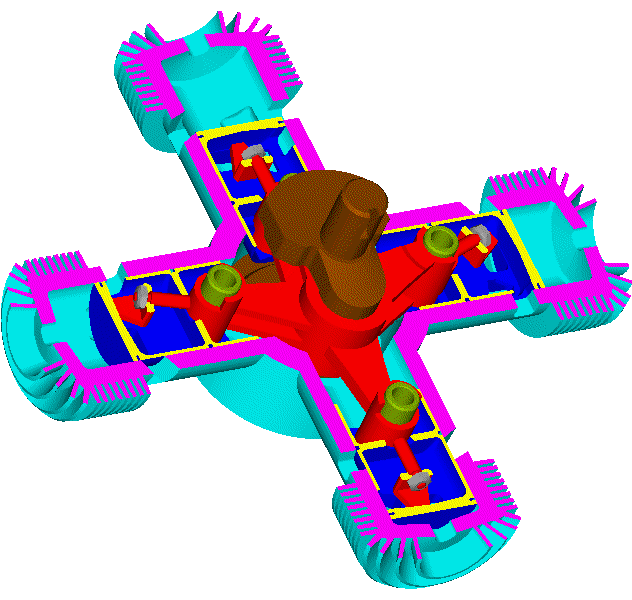
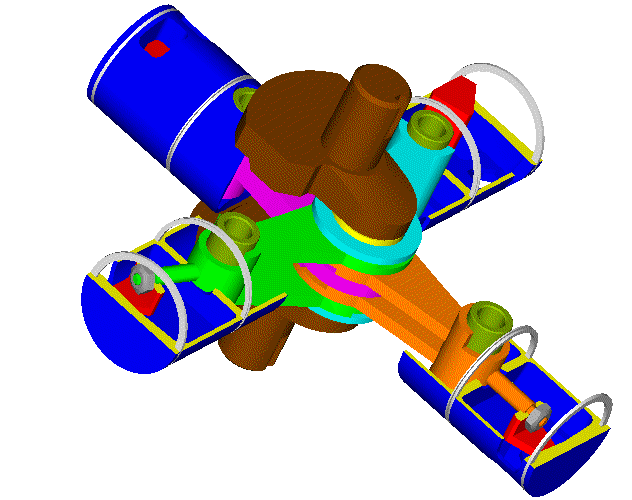
(more at
http://www.pattakon.com/pattakonPatAT.htm)
which without any balance shaft is better balanced than the best 8-cylinder 4-strokes,
which, by means of a turbocharger, uses the energy of the exhaust gas to power the scavenging,
which shares the same crankpin and bearing among the four pistons (the crank which is the heaviest part of the engine is made several times lighter),
which uses 4-stroke lubrication in the crankcase and controllable lubrication of the compression rings (at the TDC the oil scrapper ring lubricates the cylinder liner just below the ports, at the following BDC the compression ring abuts on the top end of the lubricated area of the cylinder liner),
which achieves asymmetric transfer (the transfer can end after the exhaust) without adding parts in the simplest 2-stroke design,
brings several advantages to the technology even if, for the moment, it is just a drawing / a design.
For instance, imagine it as a lightweight turbocharged 2lit direct injection Diesel (more than 200bhp at 2,500 rpm for a weight estimated at 35Kg / 80lb) directly driving the propeller (without a propeller reduction gearing the overall weight and the loss of energy in the transmission are further reduced), with BSFC and emissions lower than the state-of-the-art direct injection 4-stroke Diesels (reduced mechanical friction per kWh provided).
By the way, while the lubricant consumption (gr of lubricant per kWh provided) can be comparable with (or even less than) that of the four strokes, it cannot be zero.
Thanks
Manolis Pattakos


